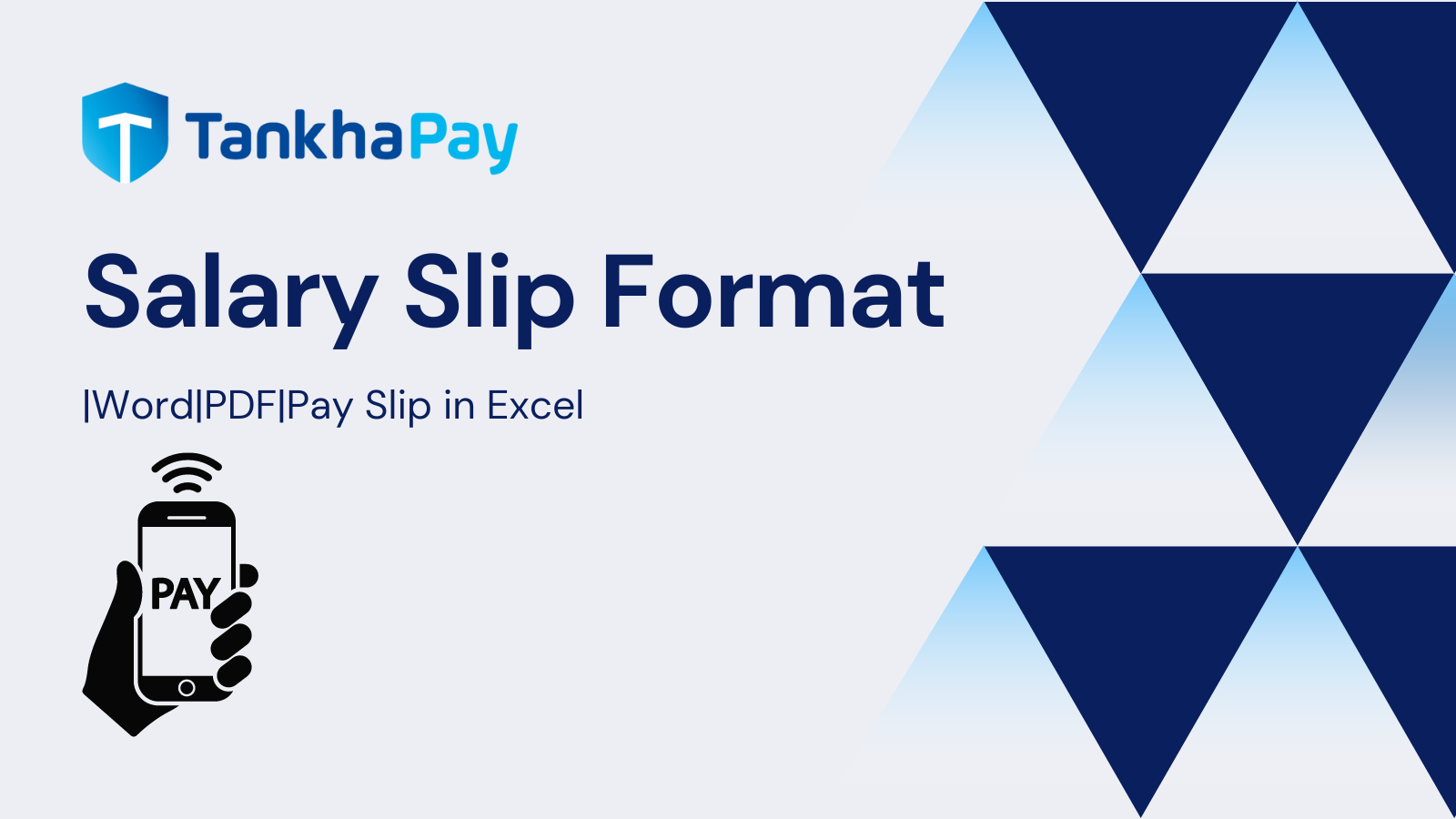Payslips are essential for employees; however, many overlook their significance. These documents detail salary, deductions, and benefits, providing a clear earnings record. Understanding payslips helps employees track finances, verify payments, and apply for loans or credit, making them a crucial aspect of financial management for working professionals.
What is a Payslip?
A payslip, commonly known as a salary slip, is a document provided by an employer to its employees on a monthly basis. It provides a detailed breakdown of an employee’s salary and deductions for a specific pay period. The payslip can be sent to employees via mail or email. It is mandatory for companies to periodically issue payslips as proof of salary payments to employees and to show the deductions made.
Considering creating payslips manually? No need to stress over manual processes – go automated instead. UBS Payroll software provides the ability to automatically generate payslips. Once you set a date, employee salaries will be calculated and payslips will be generated and sent to each employee’s email. Each organization may have a different salary slip format. Below is a general salary slip format provided for better understanding.
Importance of a Payslip
If you are an HR Manager or an employer, you should create Employee Pay Slips at the end of each month.
Creating payslips manually can be error-prone and sometimes overwhelming, especially with a large number of employees in your organization.
Did you know that you can create employee salary slips online and customize them according to your business’s salary structure? By using automated payroll management software, you can easily auto-generate payslips for your employees.
Is it possible to efficiently finalize your payroll with just a single click?
The format of the monthly salary slip varies from company to company. However, a standard payslip format generally consists of the following details:
- Company logo, name, and address
- Month and year of the pay slip
- Employee code, name, designation, and department
- Employee’s PAN, Aadhar, and Bank Account Number
- EPF Account Number and UAN (Universal Account Number)
- Working days of the month and leave taken
- Detailed list of income and deductions
- Net payable amount in both numerical and written format.
This ensures compliance with the statutory requirements of the Indian Payroll Management System.
Salary Slip Components
The employer creates the payslip each month, and employees can download it as a PDF. However, it’s important to check if employees understand the different parts of the payslip.
Many individuals only recognize the significance of a payslip when seeking a loan or applying for a new credit card. However, it is essential to cultivate a comprehensive understanding of the payslip format.
- When seeking new employment opportunities, it is imperative to meticulously evaluate the available options.
- It is prudent to minimize tax liabilities by availing of all permissible deductions.
- It is crucial to discern the portion of the salary earmarked for mandatory savings such as the Employee Provident Fund (EPF), ESI, and similar contributions.
An employee’s payslip, commonly referred to as a wage slip, contains pertinent details, including the employer’s name, the employee’s name, job title, and unique employee code. Additionally, it delineates two primary categories: income/earnings and deductions, thereby providing a comprehensive overview of the individual’s salary components.
Income
This part of the salary slip contains the basic salary and allowances. Every component of the income is discussed below.
Basic
As the name suggests, basic is the basic component of the salary. It constitutes 35 – 50% of the salary. It serves as the foundation for other pay components. At lower levels, the basic is frequently higher. Other allowances typically increase as the individual advances within the firm. The basic pay is typically kept low by organizations so that the allowance pay isn’t increased. The employee is responsible for paying 100% of taxes on the salary. The first item on the salary slip’s earnings side is basic.
Dearness Allowance
To counteract the effects of inflation on one’s wages, one is given a Dearness Allowance. It is usually 30-40% of the basic pay. DA is directly dependent on the cost of living. It differs accordingly based on the region. Basic and DA are viewed as pay for the purposes of income tax. As a result, it is taxable. It appears on the pay slip’s earnings side immediately following the basic pay.
House Rent Allowance
Employees who live in rented housing receive House Rent Allowance (HRA). The HRA is based on the employee’s city of residence. In a major metropolis, HRA is equal to 50% of base pay. It is 40% of the base salary in all other cities. Given that it is an allowance, housing rent allowance is tax-free up to a certain amount, providing the employee pays the rent. It can be found on the salary slip’s earnings side. One can save income tax on HRA.
The House Rent Allowance (HRA) received is contingent upon the annual rent paid, calculated as 10% of the pay (Basic + DA). In Chennai, Mumbai, Kolkata, or Delhi, the HRA amounts to 50% of (Basic + DA); for other cities, it is 40% of (Basic + DA).
Conveyance Allowance
Conveyance Allowance is the amount that an employer provides to cover the expenses of commuting to and from work. It is considered a concession and is therefore tax-free up to a certain limit. This allowance can be found on the earnings side of the salary slip. By receiving a conveyance allowance, one can avoid paying income tax.
- INR 1600 per month
- Actual conveyance allowance received
Medical Allowance
A medical allowance is a monetary provision extended by an employer for an employee’s medical expenses. incurred during the course of their employment. This allowance offers the advantage of tax exemption; however, the disbursement is contingent upon the presentation of substantiating documentation such as medical bills.
In the absence of such documentation, the allowance becomes subject to full taxation. Notably, an amount of up to INR 15,000 is eligible for tax exclusion exclusively upon furnishing requisite documentation. This information is typically delineated in the earnings section of the employee’s salary slip.
Leave Travel Allowance
Employers provide the leave travel allowance (LTA) to defray the travel expenses of an employee during their leave period, encompassing the travel costs of the employee’s immediate family members. Compliance with specific parameters by furnishing evidence of travel is requisite to avail oneself of the LTA discount. Notably, the LTA tax exemption exclusively pertains to expenses directly associated with transportation and does not extend to any other incidental costs incurred during the journey.
It’s imperative to note that the exemption is restricted to a maximum of two trips within a span of four consecutive calendar years. Detailed information about the LTA can be located within the earnings section of the salary slip.
Special Allowance in Salary
Performance-based compensation constitutes a type of special allowance provided to employees with the aim of incentivizing enhanced performance. These allowances, distinct within each organizational context, are fully subject to taxation. They are identifiable as components of the earnings section in the employee’s salary slip.
Deductions
The deductions part of the salary slip contains PT, TDS, and EPF.
Professional Tax
A minor tax is known as the “professional tax” is imposed by state governments on earning professionals. In just a few states it is refundable. The following states fall into this category: West Bengal, Andhra Pradesh, Karnataka, Maharashtra, Tamil Nadu, Gujarat, Telangana, Chhattisgarh, Kerala, Assam, Orissa, Tripura, Meghalaya, Bihar, Jharkhand, and Madhya Pradesh. It is assessed to everyone who makes a living through a medium, not only experts. The taxable income is reduced by this sum. It typically only amounts to a few hundred rupees each month and is taxed at the highest marginal rate. It can be seen on the salary slip’s side that shows deductions.
Tax Deducted at Source
It is the sum that the employer withholds on behalf of the income tax division. It is dependent on the employee’s gross tax bracket. By making investments in tax-exempt securities like equity funds (ELSS), PPF, NPS, and tax-saving FDs, one can lower this sum. It can be seen on the salary slip’s side that shows deductions. Your take-home pay rises as a result of investing in section 80C instruments under the Income Tax Act. One may purchase mutual funds (ELSS), provide the corporation with investment documentation, and claim TDS returns.
Employee Provident Fund (EPF)
It is the employee’s provident fund contribution. The Income Tax Act’s section 80C applies to this. The accumulation of cash for an employee’s retirement is known as a provident fund. The Employees’ Provident Fund Organization is in charge of overseeing it. EPF contributions total 12% of the employee’s base pay. For the employees’ retirement, the employer also contributes in a similar way.
However, not all of the money donated to the employee provident fund actually ends up in it. The Employees’ Pension Scheme receives 8.33% of the employee contribution. If their monthly salary exceeds INR 15,000, the contribution is INR 1,250. 8.33% of employees’ salaries under INR 15,000 are allocated to the Employees’ Pension Scheme. The remaining sum is kept in the EPF program. Employees can, however, choose to forego the EPF program (up to a certain point) and invest instead in products that yield higher returns, such as equity funds (ELSS). On the portion of the pay stub devoted to deductions, the Employee Provident Fund is listed.
Also Read – Payroll Management – Meaning, Process, Calculation
Formula of Salary Slip
Please bear in mind that there is no necessity to familiarize yourself with these formulas for the computation of employee salaries, given the presence of cloud-based payroll software within your organization.
Conclusion
In summary, a comprehensive understanding of the constituents, format, and import of a salary slip is imperative for both employers and employees. A payslip stands as a pivotal record delineating an employee’s income, deductions, and overall financial standing. The implementation of automated payroll management systems can rationalize the process, curtail inaccuracies, and warrant the punctual and precise dissemination of payslips. By mastering and proficiently overseeing salary slips, establishments can ensure compliance, augment financial lucidity, and elevate employee contentment.


